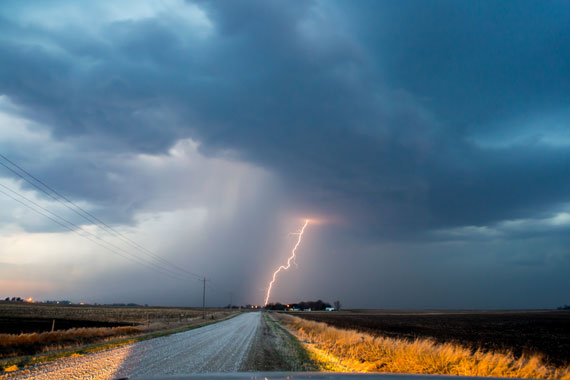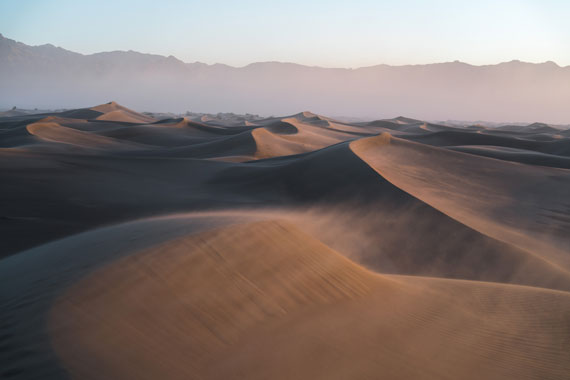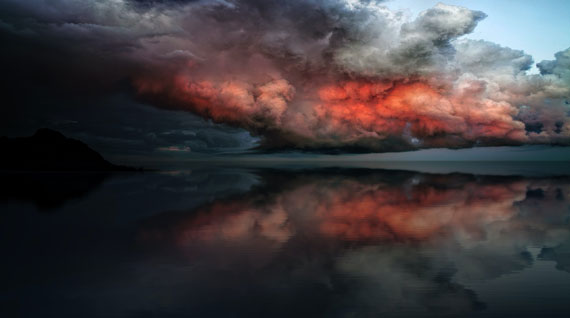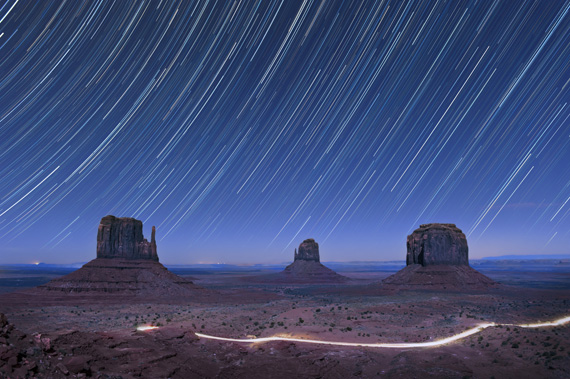Summer storms can be nature’s way of putting on a show, offering photographers an excellent opportunity to capture powerful, dramatic, and beautiful images. With clouds, lightning, rainbows, and dramatic lighting, there’s plenty to photograph. However, photographing storms also presents some unique challenges. Here’s a guide to help you capture the beauty of summer storms safely and effectively.

Photo captured by NOAA; 18mm, f/8, 10 seconds, ISO 400
Safety First
- Distance: Never prioritize a photo over your safety. Ensure you’re at a safe distance from the storm, especially lightning.
- High Ground: Avoid being the tallest object in an open area, and don’t stand near tall trees or metal structures.
- Weather Updates: Keep an eye on weather updates and storm movement. Apps like RadarScope or AccuWeather can be invaluable.
Optimal Settings
- Shutter Speed: For lightning, longer exposures (several seconds) can be effective. However, if you want to capture the individual raindrops, a fast shutter speed (1/500 or faster) is required.
- ISO: Start with a lower ISO (100 or 200) to reduce noise. You can increase it if the scene is too dark.
- Aperture: Depending on your desired depth of field, an aperture of f/4.0 to f/11 is a good starting point.
Gear Protection
- Rain Covers: Use rain covers to protect your camera and lens. Plastic bags with rubber bands can also work in a pinch.
- Lens Cloth: Keep one handy to wipe off raindrops.
- Backup Equipment: If possible, have backup gear in case something gets wet or damaged.

Photo captured by Jeremy Bishop; f/4, 1/1000s, ISO 160
Composition Tips
- Foreground Interest: Including objects in the foreground can give the viewer a sense of scale.
- Leading Lines: Use roads, paths, or natural lines to lead the viewer’s eye into the storm.
- Rule of Thirds: Position the horizon on the top or bottom third of the frame, depending on whether the sky or ground is more interesting.
Use a Tripod
Especially in lower light conditions or when capturing lightning with longer exposures, a tripod is essential to reduce camera shake and ensure sharp images.
Focus on Details
While vast stormy skies are captivating, don’t forget to focus on smaller details like raindrops on leaves, puddles reflecting the stormy sky, or the patterns of streaming water.
Chase the Light
The period just before or after a storm can have incredibly dramatic lighting. Golden hues, intense contrasts, and rainbows can emerge, offering unique photographic opportunities.

Photo captured by Johannes Plenio; 16mm, f/4.0, 1/30s, ISO 200
Post-Processing
Enhance the drama using editing tools. Increase contrast, sharpen details, and bring out the colors to give your storm photos an edge. However, avoid over-editing to the point of making the image unrealistic.
Practice and Patience
Nature is unpredictable. You may not get the perfect shot on your first outing. Keep practicing, understanding the nuances of your equipment and the weather patterns of your location.
Learn and Share
Join storm photography communities online or in person. Sharing experiences, tips, and photos can be beneficial and inspiring.
In conclusion, photographing summer storms is as much about understanding and respecting nature as it is about technical prowess. With safety at the forefront, embrace the challenge, and you’ll find yourself capturing some of nature’s most awe-inspiring moments.
For Further Training:
This #1 bestseller is the most in-depth eBook on how to capture amazing photography anywhere. Over 250 pages of photography tips & tricks from industry insiders. Currently 83% off which ends soon for a Summer Sale if you want to check it out.

How to do Star Trail Photography
It is the product of over a DECADE of research as an insider in the photography industry, assembled to help you learn quickly and avoid the mistakes that I made along the way.
Deal ending soon: The Photography Tutorial eBook Summer Sale
Like This Article?
Don't Miss The Next One!
Join over 100,000 photographers of all experience levels who receive our free photography tips and articles to stay current:






Leave a Reply